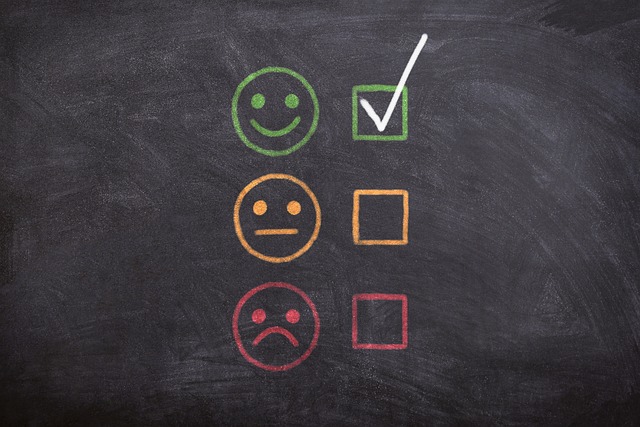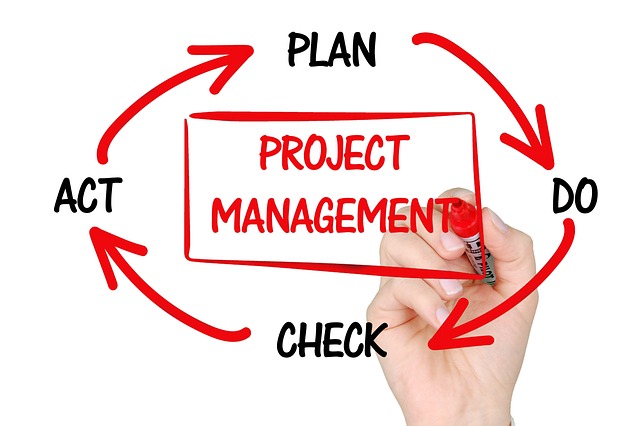Understanding Continuous Feedback
Continuous feedback is a dynamic practice that enhances organizational effectiveness, personal growth, and employee engagement. Imagine a workspace where feedback flows freely between team members and leaders, enabling everyone to learn and adapt almost in real-time. This isn’t just a pipe dream; it’s an attainable reality for companies that prioritize and invest in a culture of continuous feedback. To foster this culture, organizations must first understand the core concept of continuous feedback. Rather than waiting for annual reviews, continuous feedback encourages regular check-ins, spontaneous reflections, and ongoing conversations about performance and engagement. This method helps employees to feel more valued and connected, while also creating an environment that champions improvement, transparency, and communication.
Organizations that embrace continuous feedback often notice that their employees tend to be more invested in their roles. This happens because ongoing feedback creates a sense of transparency. Employees no longer wonder how they’re performing in their roles. They receive actionable insights on their contributions regularly. Furthermore, continuous feedback nurtures development by empowering employees to take ownership of their progress. They can identify areas for improvement and better align their goals with the organization’s objectives. When team members know exactly where they stand, they’re more likely to push themselves and explore new opportunities for growth. In essence, continuous feedback transforms performance discussions from a one-time event into an ongoing dialogue, fostering a culture where development becomes an integral part of the day-to-day experience.
Building the Foundation for a Feedback Culture
To successfully implement continuous feedback within an organization, leaders must begin by laying the groundwork. A key aspect of this foundation is establishing psychological safety. Team members should feel secure in voicing their opinions and sharing constructive criticism without fear of retribution or negative consequences. When employees feel safe, they are more likely to engage in open conversations about their work, challenges, and suggestions for improvement. Organizations should prioritize psychological safety by promoting values like respect, empathy, and reliability among all team members. Training programs focused on emotional intelligence can help cultivate a sense of understanding and connection within the team.
Moreover, leadership plays a vital role in cultivating an environment ripe for feedback. Leaders must model the behavior they wish to see. When managers actively seek feedback from their teams and respond positively, they set the stage for a feedback-rich culture. Employees should witness their managers receiving feedback graciously and using it as a leaping point for improvement. This modeling behavior signals that feedback is not only welcome but also valued within the organization. Additionally, management should encourage peer-to-peer feedback. By fostering relationships built on trust among colleagues, organizations create an ever-evolving dialogue where teams learn from each other regularly, sharing insights on both successes and failures.
Creating Structured Feedback Mechanisms
While spontaneous feedback is beneficial, having structured mechanisms in place can further fortify a culture of continuous feedback. Scheduled one-on-one meetings can serve as a designated time where both managers and employees can engage in meaningful conversations. During these sessions, both parties can discuss achievements, challenges, and areas for development. This structured approach creates consistency and ensures that feedback remains a pivotal part of regular operations, rather than an afterthought. Additionally, organizations might consider implementing formal feedback tools. These could range from digital platforms that facilitate anonymous feedback to apps that promote peer recognition. By utilizing technology, organizations can streamline the feedback process, much like how they manage other core operations.
Another effective method is implementing ‘feedback loops’. Feedback loops incorporate multiple elements, including collection, analysis, and action. By regularly gathering feedback—whether through surveys, focus groups, or informal coffee chats—organizations can create a cycle that reinforces the value of feedback. Once feedback is collected, it should be analyzed and shared with the team. This reaffirms that their opinions matter and that their insights contribute to the larger decision-making process. When employees see tangible changes resulting from feedback, it reinforces their confidence in sharing their thoughts and opinions in the future, perpetuating the cycle of feedback.
Training and Development for Effective Feedback
Even with the best frameworks in place, the effectiveness of continuous feedback depends heavily on the skills and mindset of the individuals involved. Therefore, training and development become crucial components of fostering a culture of continuous feedback. Organizations should invest in training programs that teach both employees and managers the essential skills required for giving and receiving feedback. This training should cover topics like active listening, delivering constructive criticism, and approaching conversations with openness and respect. When team members learn how to provide feedback effectively, they can offer solutions rather than just highlight problems. This proactive approach contributes positively to team morale and overall productivity.
Moreover, training should not end with initial workshops. Continuous learning opportunities should be embedded in the company culture. Regular refresher courses, role-playing scenarios, and even mentorship programs can keep skills sharp while reinforcing the importance of feedback. In a learning-centric environment, individuals continuously seek opportunities to enhance their feedback skills. This ongoing development becomes a natural part of the culture, resulting in improved communication and collaboration. Organizations that prioritize training ensure that their teams feel equipped to engage in meaningful dialogues about performance and development. These skills not only enhance feedback interactions but also foster deeper relationships among coworkers.
Overcoming Barriers to Continuous Feedback
While striving for a culture of continuous feedback is admirable, many organizations may face barriers along the way. One common obstacle is the discomfort associated with giving constructive criticism. Some individuals may fear that their feedback will be taken personally or lead to conflict. This is where leadership has a pivotal role to play. By normalizing feedback as a regular part of communication, leaders establish that constructive criticism shouldn’t be perceived negatively but rather as an opportunity for growth. Encouraging team members to discuss their past experiences with feedback—both positive and negative—can help identify these fears and address them together, creating an understanding environment.
Another barrier might be time constraints. In fast-paced work environments, dedicating time for feedback discussions can seem difficult. However, organizations can combat this by integrating feedback into existing meetings and workflows. It doesn’t always require an extensive time commitment. Even a few minutes spent discussing feedback can have a memorable impact. Moreover, leaders should emphasize the long-term benefits of investing time in continuous feedback sessions. When employees understand that these discussions lead to better performance and stronger teams, they may become more willing to prioritize feedback in their busy schedules.
Measuring the Impact of Continuous Feedback
As organizations embark on the journey of fostering a culture of continuous feedback, they should also consider how to measure the effectiveness of their efforts. Quantifiable metrics can help assess whether continuous feedback practices are translating into desired outcomes. Regular employee surveys can provide insights into how employees perceive the feedback culture. Are they receiving feedback often enough? Is it constructive? Are they comfortable sharing feedback with their peers? Survey data can uncover trends and highlight areas needing improvement, ensuring that organizations remain proactive in creating a positive feedback environment.
Additionally, organizations can analyze performance metrics before and after implementing continuous feedback practices. For instance, tracking key performance indicators (KPIs) related to engagement, productivity, and employee retention can illustrate the impact of a feedback-driven culture over time. These quantitative measures combined with qualitative insights from employee testimonials can provide a comprehensive view of the culture’s effectiveness. Furthermore, progress evaluations can serve as touchpoints for organizations to reassess and adjust their feedback initiatives, ensuring their efforts remain aligned with the evolving needs of their workforce.
Creating a Cycle of Improvement Through Feedback
The ultimate goal of creating a culture of continuous feedback is to foster ongoing improvement—not just for the organization but for every individual involved. When feedback is embraced as a tool for learning, organizations can thrive, and employees can grow. This culture encourages a mindset focused on progress rather than perfection. Organizations that prioritize this cycle of improvement create environments where experimentation is welcomed and perceived failures are merely stepping stones to success. Every piece of feedback becomes a building block in a larger foundation of growth, driving innovation and excellence within teams.
As feedback becomes seamless and integrated, it can also enhance team dynamics and collaboration. When team members consistently share their thoughts, they’re not just improving their own work; they are enriching the team’s collective knowledge. This sparks creativity and drives cross-functional cooperation, resulting in higher levels of engagement and effectiveness. Additionally, by recognizing and celebrating the positive outcomes of feedback, organizations can reinforce the behaviors that lead to a productive feedback culture. Thus, feedback transforms into a powerful catalyst that not only drives individual development but also propels the entire organization towards its strategic goals.
Conclusion
Fostering a culture of continuous feedback requires commitment from all levels of the organization. It involves creating a safe environment, providing structured feedback mechanisms, equipping employees with the necessary tools, overcoming barriers, and measuring success. However, the rewards are massively worth the effort. Organizations can cultivate an environment that thrives on development, open communication, and collective progress. When feedback becomes part of the daily routine, it empowers employees, strengthens teams, and drives performance. Ultimately, fostering continuous feedback leads to a more engaged and productive workforce, setting the stage for long-term success.
Frequently Asked Questions (FAQ)
1. What is continuous feedback?
Continuous feedback refers to an ongoing dialogue about performance that occurs regularly rather than at set intervals like annual reviews. It encourages real-time communication about achievements and areas for improvement.
2. How can organizations create a culture of continuous feedback?
Organizations can create a culture of continuous feedback by establishing psychological safety, providing structured feedback mechanisms, investing in training, and encouraging open communication among employees.
3. Why is psychological safety important in feedback cultures?
Psychological safety ensures that employees feel secure voicing their opinions and giving feedback without fear of negative repercussions. This openness leads to more constructive conversations and learning opportunities.
4. What role does leadership play in fostering continuous feedback?
Leadership plays a critical role by modeling feedback behavior, demonstrating openness to receiving feedback, and actively promoting a culture that values communication at all levels.
5. How can organizations measure the effectiveness of their feedback culture?
Organizations can measure the effectiveness of their feedback culture through employee surveys, performance metrics, and regular evaluations of feedback processes to ensure they meet the needs of their workforce.



